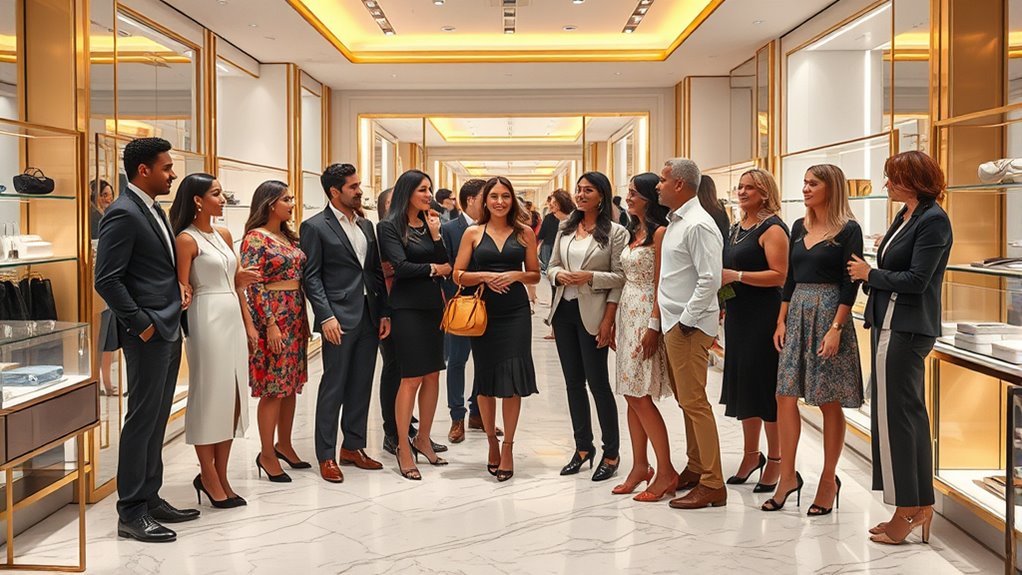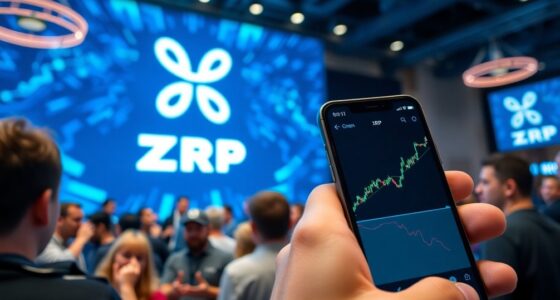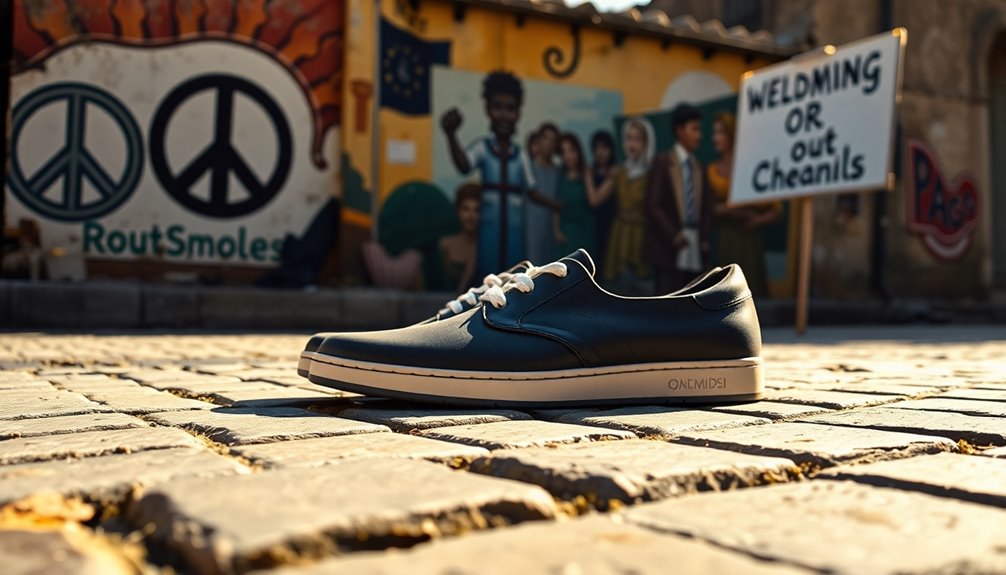Diversity and inclusion are transforming the luxury industries by promoting authentic representation across cultures, genders, and backgrounds. Brands now prioritize inclusive marketing, foster diverse leadership, and incorporate innovative tech like AI to understand consumer needs better. Challenges remain, but many are responding with strategic initiatives focused on sustainability, transparency, and social impact. If you want to explore how these efforts are shaping the future of luxury, there’s more to uncover behind these changes.
Key Takeaways
- Luxury brands are actively integrating DEI through diverse marketing, inclusive product design, and leadership representation to reflect global consumer identities.
- Industry initiatives include creating diversity councils, appointing chief diversity officers, and pursuing certifications to promote authentic inclusion.
- Technology, especially AI, is used to analyze consumer preferences, reduce biases, and enhance inclusive recruitment and communication.
- Sustainability and social responsibility are intertwined with DEI efforts, emphasizing eco-friendly practices and social impact initiatives.
- Growing consumer demand for authentic, diverse experiences is reshaping luxury branding, increasing loyalty, and expanding market reach.
The Evolution of DEI in the Luxury Sector
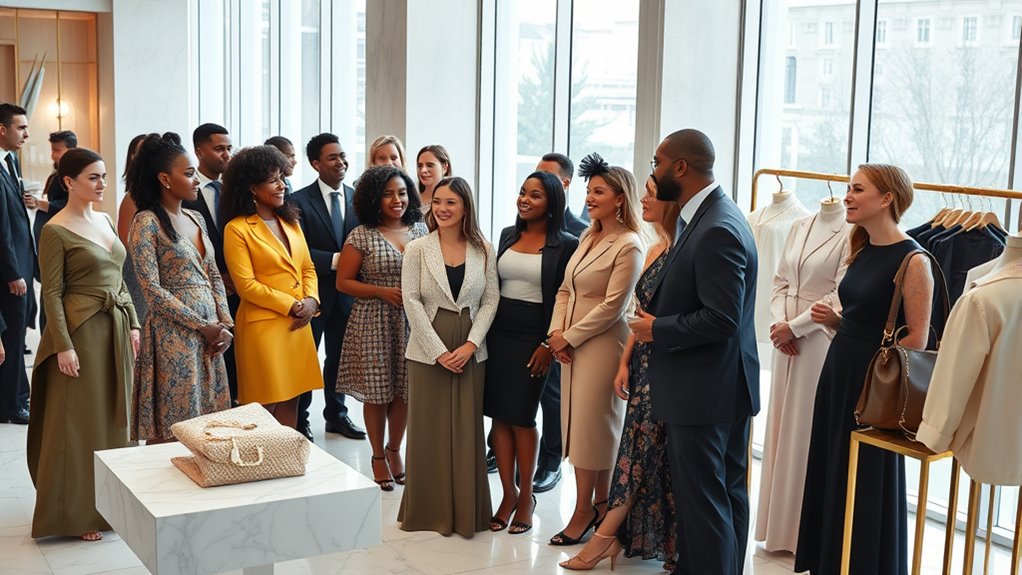
How has the luxury industry’s approach to diversity and inclusion evolved over time? You’ve likely noticed that luxury brands are now making genuine efforts to embrace diversity. In the past, exclusivity meant limited representation, but today, many brands are actively working to reflect different identities, cultures, and backgrounds. They’ve created diversity councils and appointed chief diversity officers to guide these initiatives. Recognition from awards like the Financial Times’ Diversity Leaders List shows progress, with brands like Hermes and Giorgio Armani leading the way. Industry responses to social movements such as Black Lives Matter, along with the pandemic, have pushed luxury brands to prioritize inclusion and social responsibility. As consumer demographics shift, luxury companies understand that a broader definition of diversity is essential for staying relevant and authentic. Additionally, advancements in AI in Business are enabling brands to better analyze consumer preferences and tailor their diversity initiatives more effectively, fostering a deeper understanding of cultural nuances and consumer needs. Moreover, the increasing focus on inclusive marketing strategies demonstrates how the sector is evolving to celebrate and represent a wider range of experiences. Incorporating creative practice into their campaigns also allows brands to experiment with innovative ways of showcasing diversity, helping to challenge traditional notions of luxury.
Current Challenges and Industry Responses
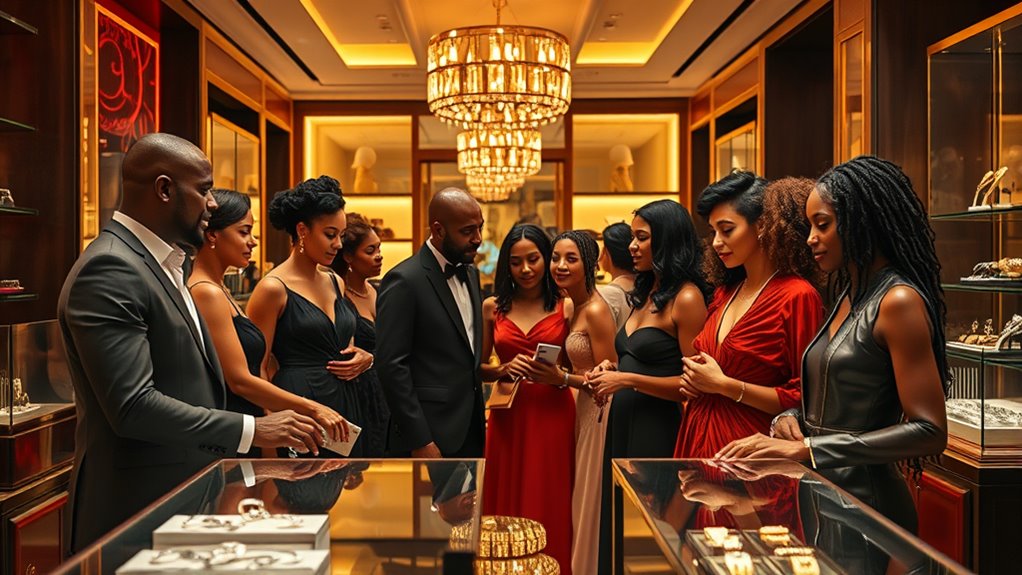
Despite the progress luxury brands have made in embracing diversity, they still face significant challenges in turning commitments into meaningful change. Industry challenges like structural and cultural barriers slow down the implementation of diversity and inclusion initiatives. Many brands have created diversity councils and appointed chief diversity officers, but progress remains sluggish, with underrepresentation and limited diverse imagery persisting in campaigns. Public scrutiny and social media activism have pushed brands to boost their transparency and corporate social responsibility efforts. However, industry challenges such as resistance from traditional customer bases, avoiding tokenism, and authentically integrating diversity across all practices continue to hinder progress. To succeed, luxury brands must address these hurdles head-on and move beyond superficial efforts to foster genuine inclusion. Additionally, the adoption of the 1st Home Theatre Projector principles can serve as a metaphor for creating clear, inclusive visuals that resonate authentically with diverse audiences. Recognizing the importance of Personality Traits can help brands better understand and connect with their varied consumer bases, fostering deeper engagement and trust. Developing diverse imagery that authentically reflects different cultures and backgrounds is crucial for building genuine connections with a global audience. Furthermore, embracing cultural competence can enable brands to navigate and celebrate the rich diversity of their clientele more effectively.
Strategies for Authentic Representation and Engagement
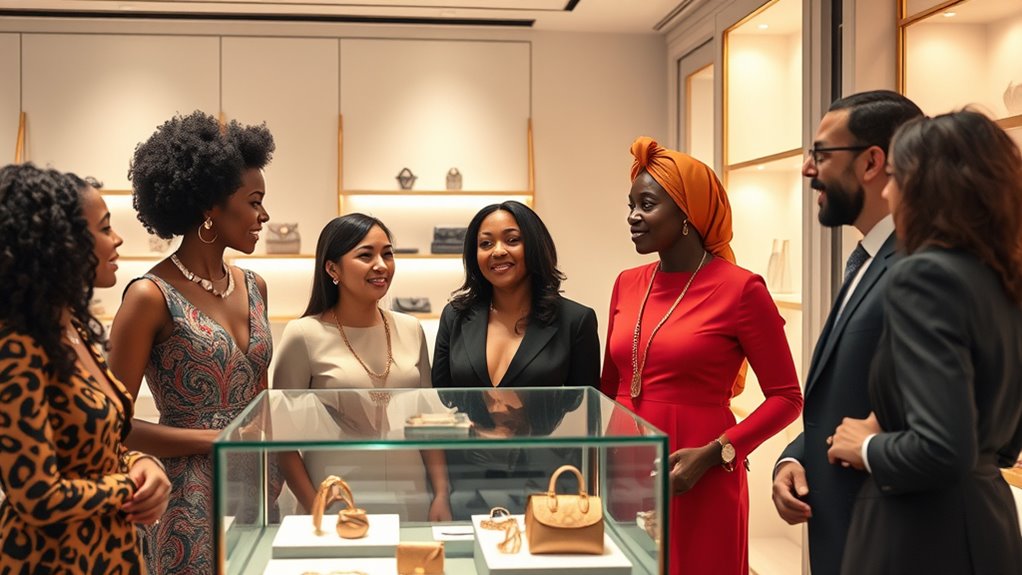
To achieve authentic representation and meaningful engagement, luxury brands must go beyond surface-level initiatives and embed diversity deeply into their practices. This involves actively showcasing diverse talent, integrating different cultures into product design, and fostering genuine connections with consumers. You should:
- Highlight models from diverse ethnic backgrounds to reflect authentic representation.
- Use social media and influencer collaborations to better understand diverse consumer needs.
- Obtain certifications for workplace diversity to demonstrate genuine internal commitment.
- Avoid tokenism by ensuring diversity influences marketing, leadership, and product creation.
- Recognizing the importance of diversity in media can help brands craft more inclusive and relatable narratives.
- Incorporating cultural influences into design processes ensures products resonate with a broader range of consumers.
- Emphasizing inclusive marketing strategies that account for diverse consumer preferences is essential for authentic engagement.
- Understanding the role of AI ethicist jobs can help brands develop ethical frameworks that support inclusive practices and responsible AI use.
The Role of Innovation and Technology in Promoting Inclusivity
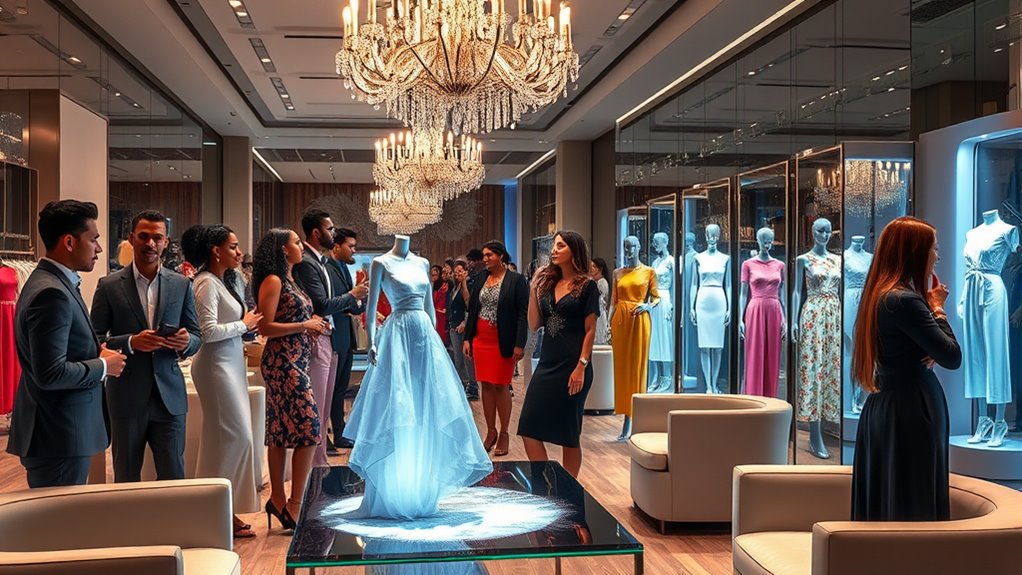
Innovation and technology are transforming the way luxury brands promote inclusivity by creating new avenues for representation and engagement. AI plays a pivotal role, embedding DEI principles into recruitment, compliance, and communication to guarantee diverse representation. By fine-tuning large language models with a DEI lens, brands can reduce biases and better reflect community diversity. Inclusive design, driven by innovation, promotes equitable access and fair treatment across different demographic groups, amplifying social impact. Voice activation features, like Verizon’s tools for visually impaired users, demonstrate how technology can benefit broader audiences. Despite these advancements, many luxury companies underutilize AI’s potential for DEI initiatives. Embracing innovative AI solutions offers a strategic opportunity to enhance inclusivity and strengthen brand authenticity. Incorporating halal living principles into these technological efforts can further expand cultural inclusivity and respect. Additionally, ongoing training programs for designers and staff ensure that inclusive practices are consistently prioritized as technology evolves, and integrating Eye Patch benefits can serve as an example of targeted innovations that foster well-being and representation within product offerings. Moreover, understanding the importance of comprehensive health coverage like dog surgery insurance can inspire brands to develop products that cater to diverse needs and preferences.
Shaping the Future: Trends and Opportunities in Luxury DEI

As the luxury industry evolves, brands are increasingly embedding DEI strategies into their core operations to stay relevant and competitive. This shift open doors to new opportunities to embrace Diversity and foster Inclusion. You’ll notice luxury brands like LVMH expanding leadership diversity and making inclusivity part of their brand DNA. Consumer spending by people of color has surged 25%, with minority purchasing power increasing 28%, highlighting market potential. Key trends include:
- Emphasizing intersectional Diversity across race, gender, and culture
- Elevating diverse voices through initiatives like scholarships and marketing campaigns
- Adopting certifications and global standards to prove authentic Inclusion commitments
- Recognizing the importance of broadening talent pools and leadership diversity
- Supporting inclusive camping environments, which reflects a broader commitment to sustainability and environmental stewardship in diverse settings.
These trends shape a more inclusive future, positioning luxury brands to thrive in an evolving marketplace.
Frequently Asked Questions
What Is the LVMH Diversity and Inclusion Policy?
You want to know about LVMH’s diversity and inclusion policy. They embed D&I into their culture by setting clear goals for gender and racial representation, aiming for balanced leadership by 2025. They promote transparency through regular reports and work with external organizations to foster inclusive practices. This commitment enhances innovation, boosts employee engagement, and broadens their appeal to diverse consumers, making D&I a core part of their success.
How Can the Luxury Industry Become More Inclusive?
Imagine weaving a vibrant tapestry where every thread counts. To make the luxury industry more inclusive, you need to actively embrace diversity at every stitch—from design to leadership. Champion authentic storytelling, foster community engagement, and embed DEI into your brand’s DNA. By doing so, you’ll create a richer, more authentic fabric that attracts wider audiences and transforms the industry into a true reflection of our diverse world.
Why Is Diversity Important in the Fashion Industry?
You realize that diversity in the fashion industry is essential because it drives growth, boosts revenue, and keeps brands relevant. When you embrace different cultures, perspectives, and models, you attract a broader audience and reflect society better. This inclusivity not only enhances brand reputation but also sparks innovation and attracts top talent. Ultimately, you stay competitive in a dynamic, multicultural marketplace by valuing and promoting diversity.
Which Company Is Known for Its Diversity and Inclusion Initiatives?
You might wonder which company leads in diversity and inclusion efforts. Prada stands out because of its thorough initiatives, including internal audits and partnering with minority-led organizations to promote representation. By actively fostering an equitable environment and engaging with diverse communities, Prada demonstrates a strong commitment. This proactive approach sets a benchmark for other brands, making it clear that embracing diversity is essential for growth and social responsibility.
Conclusion
As you look ahead, the future of diversity and inclusion in luxury isn’t just about ticking boxes—it’s about genuine change. Will brands truly embrace authentic representation, or will they risk falling behind? The innovations and strategies you’re about to see could redefine what luxury means for everyone. Stay tuned, because what happens next could reshape the industry forever—and you won’t want to miss it. The next chapter is just around the corner.
